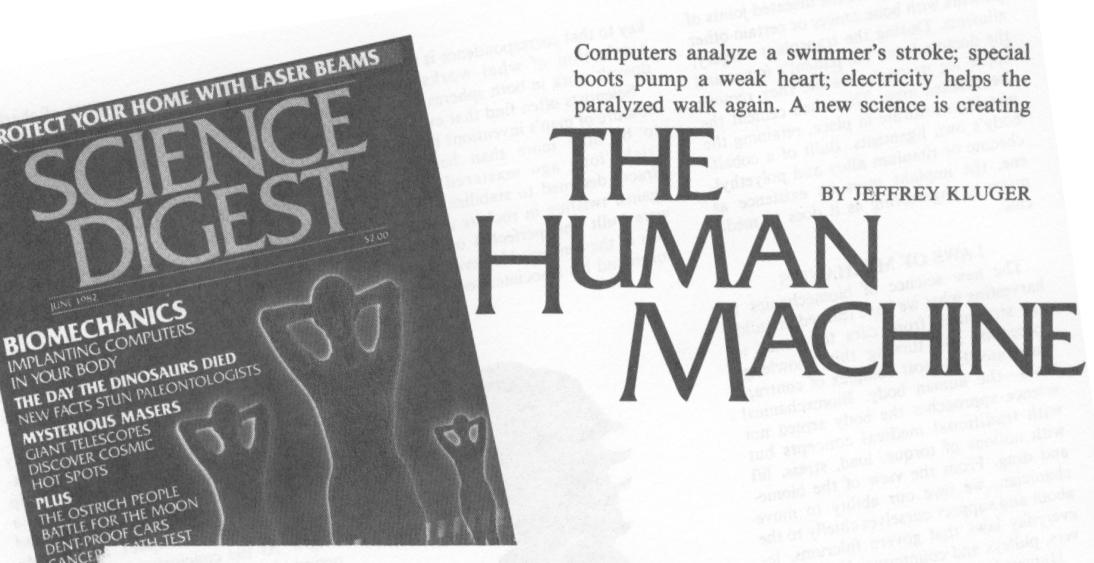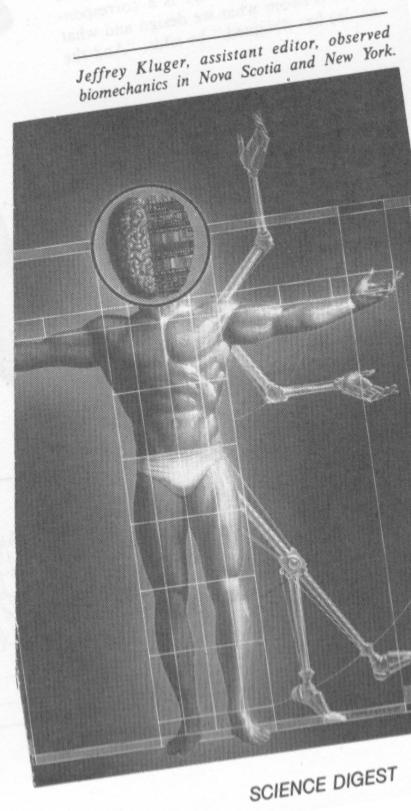| Index | Next |
![]()
Sprinting gracefully downfield, a football player closes in confidently on a sure touchdown. But just short of the goal line, his rhythm breaks and in a grimace of agony he tumbles forward. His Achilles tendon, the stout cord at the back of his ankle, has ruptured, and his foot hangs limply as he is helped off the field. Across town, a construction derrick strains to lift an enormous steel girder. Struggling against too heavy a load, a cable snaps. The girder goes crashing to the sidewalk, and the derrick collapses. Each day, the gap narrows. Each day, the distinctions fade a bit more. The distance between man and machine-and the differences that make each unique-are vanishing. In function, design, intellect and even mortality, what we are and what we build grow ever more similar. It is a trend that's hardly new. For centuries we have endowed much of what we build with the attributes of living beings. Our cars are quadrupeds equipped with two eyelike orbs. Our power shovels and backhoes feature "arms" that bend and reach with striking similarity to our own. Complex webs of mains and pipes transport water through buildings, just as an even more intricate network of arteries, veins and capillaries carries blood through our bodies. Our language, too, reflects a blurring of the line between biology and engineering: our main roads are arteries; our corporate headquarters are nerve centers; our spaceships are covered with protective skins. We measure distances in feet, and we get to the heart of a matter. And despite our knowledge that living things die and inorganic objects don't, how often have we heard a motorist claim that his battery just did? The parallels between biology and machinery are so remarkable that human inventions and human beings may have passed the point of simple similarity. Rather, the two are slowly integrating, weaving into a single, inseparable unit, a human machine. Nowhere is the consolidation more evident than in health care. Take artificial body parts, for example. For centuries we have designed door hinges and machine joints that mimic the action of the knee. That same technology is now allowing us to replace the knee itself. At the Hospital for Special Surgery in New York City, doctors are working with engineers to build artifi-


![]()
| Index | Next |